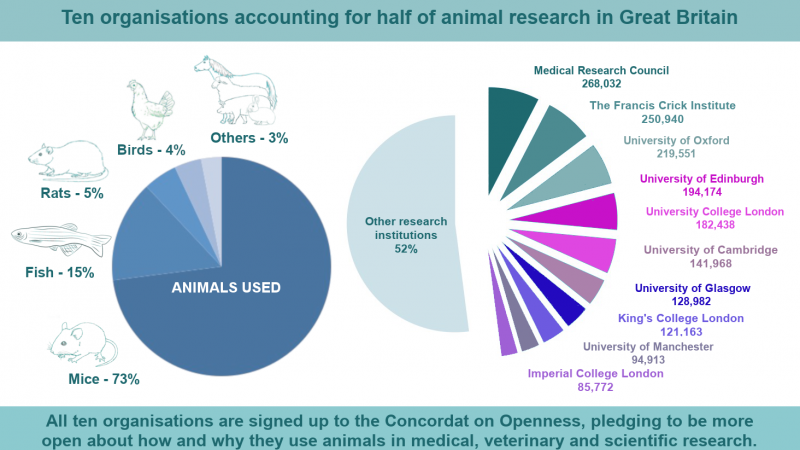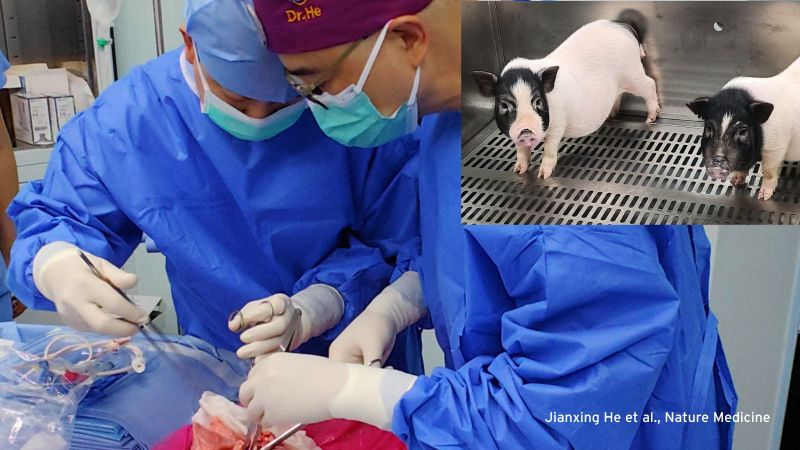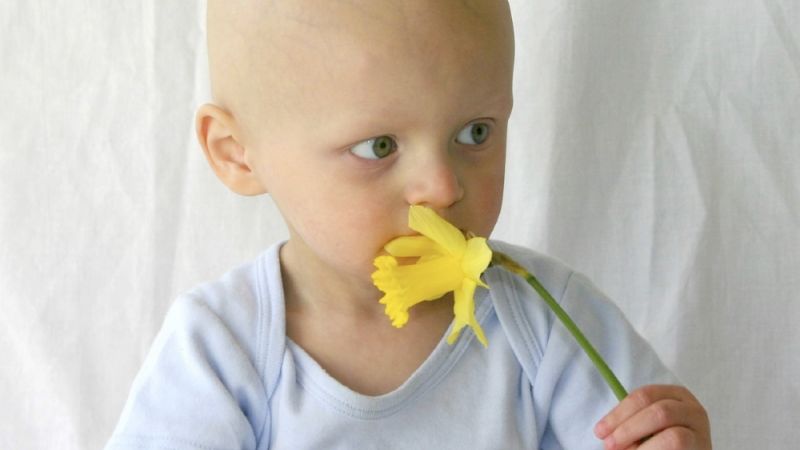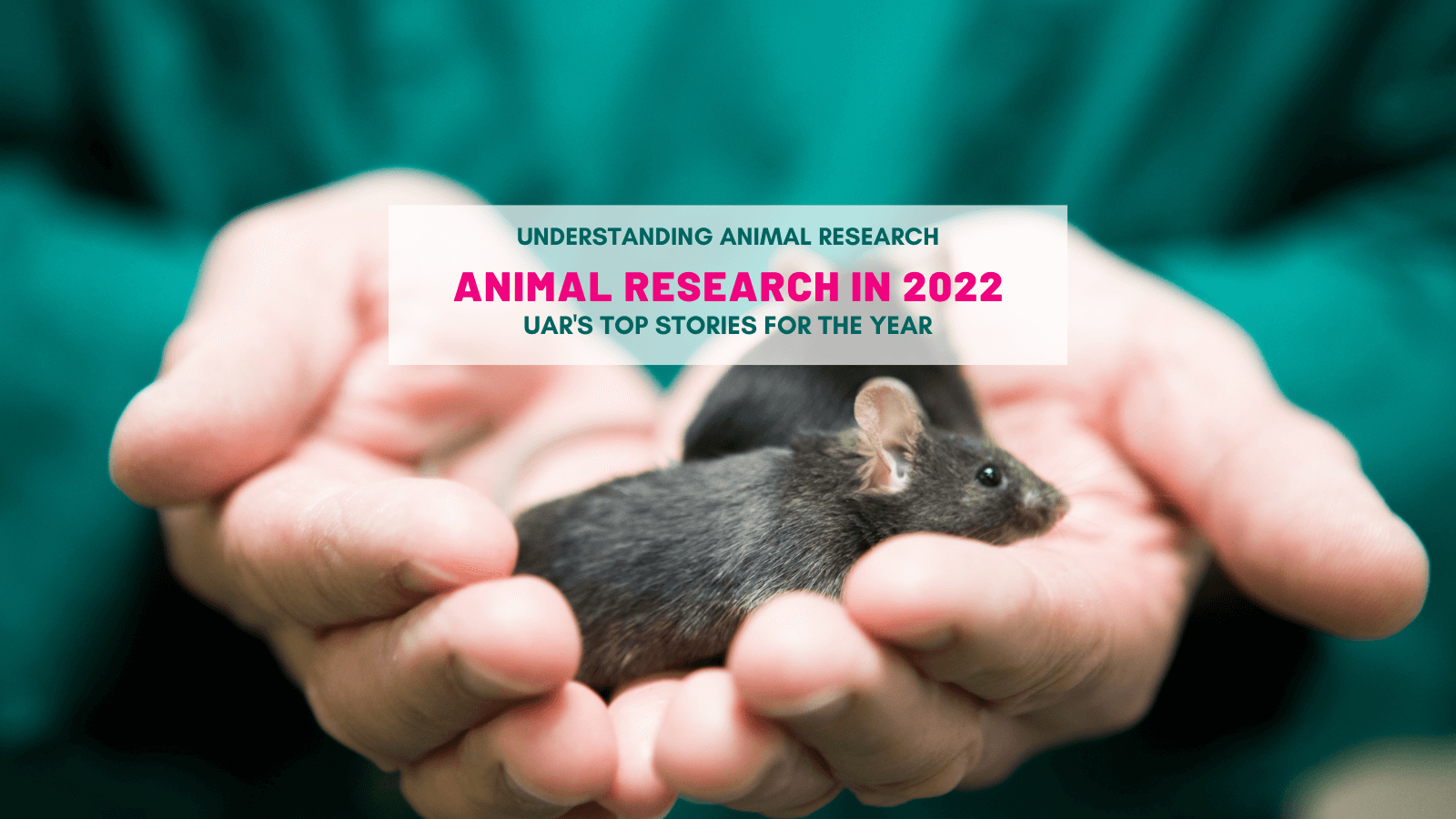
UAR's Top 10 Animal Research Stories of 2022
Every year, UAR makes a point of selecting top research that has involved animals. Here is this year’s selection of fundamental, pre-clinical and clinical research:
1. Paralysed man walks again thanks to spinal implant
In a culmination of three decades of research, including vital studies in rats and monkeys, a paralysed man with a severed spine was able to walk again thanks to an electrical spinal implant. The implant restores the connection at the injury site by sending electrical currents to the neurons below the spinal cord injury. So far nine people have received the implant and regained the ability to walk.
This is not a cure for spinal cord injury, but a major step at improving quality of life. For more information check out our article : : Learning to walk again: the history of spinal cord implants
2. First-ever pig to human heart transplant
For the first time ever, researchers transplanted an animal heart into a human. After decades worth of research, the heart of a genetically altered pig was successfully transplanted into a patient at the University of Maryland School of Medicine. Aside from two legally brain-dead people receiving successful kidney transplants from genetically modified pigs in 2021, most research into xenotransplantion has taken place in non-human primates.
Unfortunately, the recipient died two months after his surgery. While it is not clear what the exact cause of death is, this experimental surgery always presented a risk and was only approved as a final treatment option. Further investigations will improve the outcome of this surgery and determine the next steps in this critical research to solve the global shortage of transplant organs.
Read our article 'Pig to human heart transplants: how did we get here?' for more information about the history of xenotransplantation.
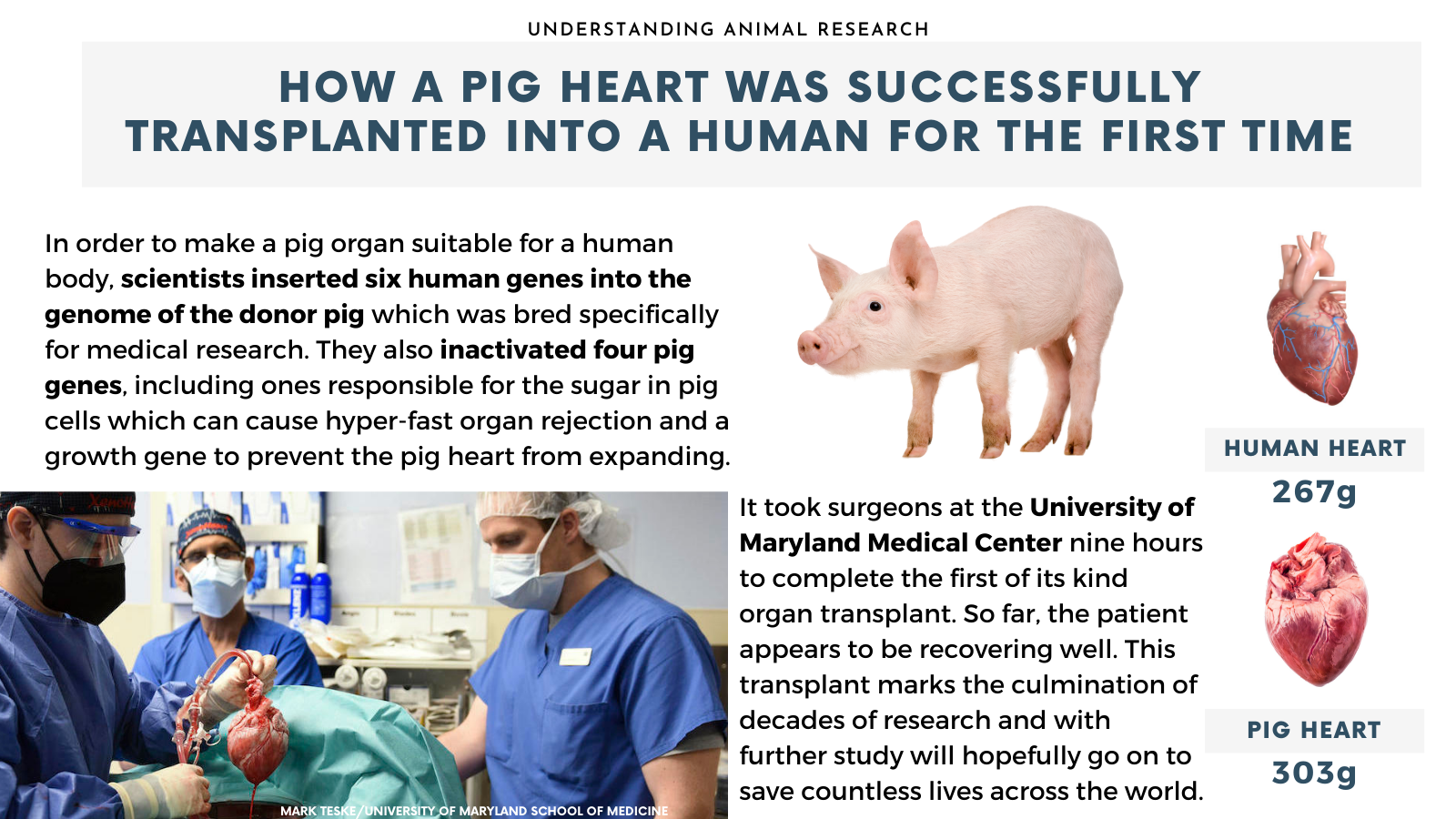
3. Pioneering transplant procedure used to reduce organ rejection in toddler
This year, a baby became the first person in the world to receive a combined heart and thymus transplant, an experimental surgery that hadn't been done in combination before. Born with a weak heart and problems with his immune system, the child spent time on life support and needed numerous heart operations and treatment for infections that his body could not fight on its own.
Research in mice had shown that transplanting a small piece of thymus tissue, which originally makes immune cells, from the heart donor helps the body accept the foreign heart, thus preventing organ rejection. Researchers hope that the chances of organ rejection will be reduced in the baby due to the thymus transplant building critical immune cells, and that it will reduce or even eliminate the need for the baby to take lifelong anti-rejection drugs.
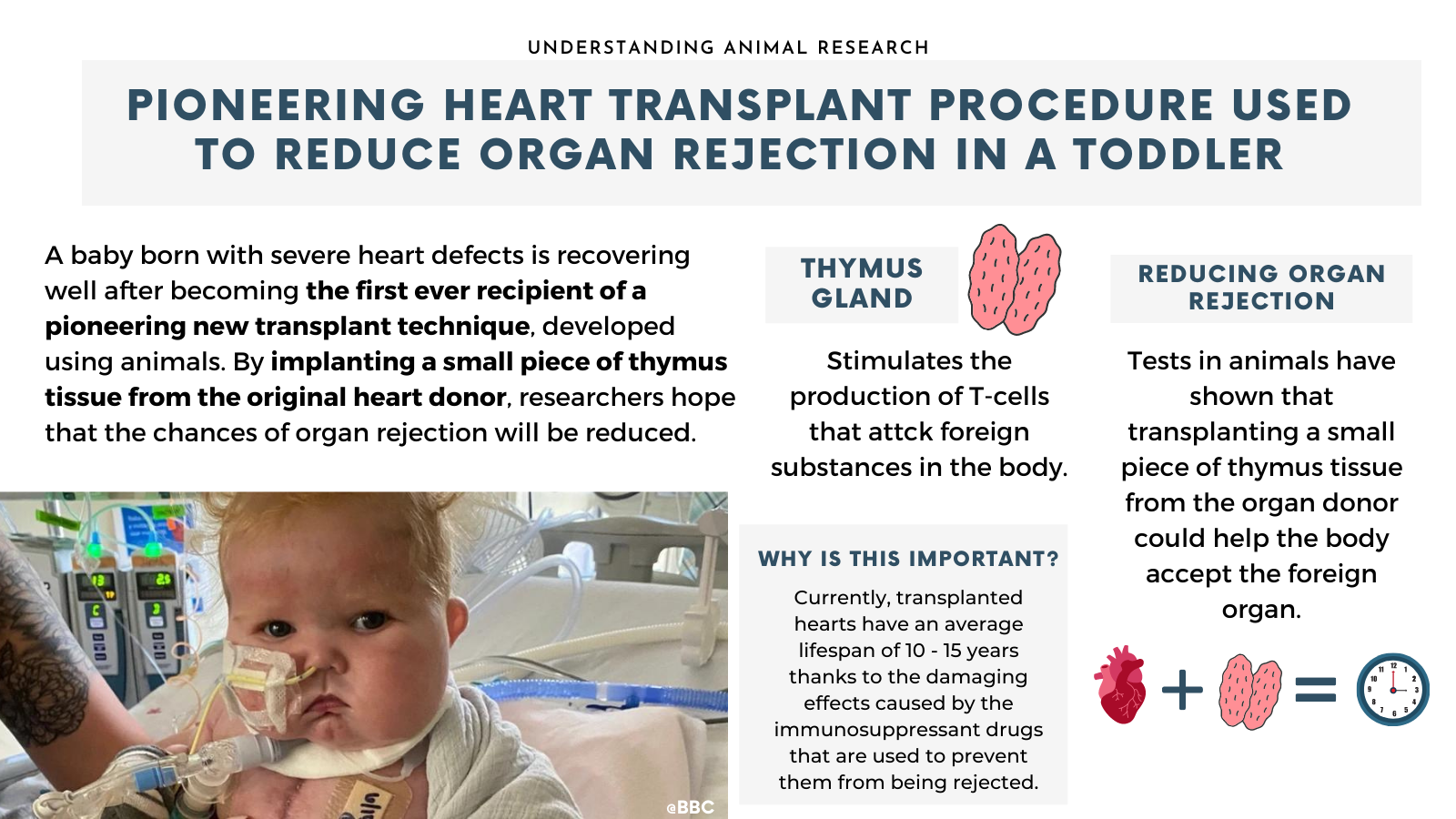
4. Genetic heart conditions could be cured for first time
Every week in the UK, 12 people under the age of 35 die of an undiagnosed heart condition, very often caused by cardiomyopathy, a genetic heart muscle disease. Scientists have developed a cure that works in animals. It silences the faulty genes using a precise genetic technique. This gene therapy, if successful in human trials, will be a once-in-generation opportunity to relieve families of the constant worry of sudden death, heart failure, and the potential need for a heart transplant.
5. Vaccine to protect against Epstein-Barr virus successful in animal studies
Epstein-Barr virus is a type of herpes virus commonly spread via saliva and present in over 90% of the population. It causes glandular fever (also known as mono) and is associated with Multiple Sclerosis (MS), lymphoma and stomach cancer. Researchers have developed a vaccine to protect against the virus that has shown promise in animal (mice, ferrets and rhesus macaques) tests.
After receiving the vaccine, only 17% of genetically engineered mice with a human-like immune system became infected, compared to 100% of mice that didn’t receive the jab. None of the vaccinated mice developed lymphomas, compared to half of the untreated mice.
Human trials are expected to start in 2023. If proven successful, the vaccine could be administered to children and prevent Epstein-Barr-related conditions.
6. Link between car fumes and lung cancer
Lung cancer is the 3rd most common cancer in the UK. There are around 48,500 new lung cancer cases in the UK every year, that's more than 130 every day. Scientists have uncovered the link between car fumes and lung cancer that helps explain why so many non-smokers develop the disease – a wakeup call to the dangers of air pollution. The findings in mice and human tissues outline how fine particulates contained in car fumes “awaken” dormant mutations in lung cells and tip them into a cancerous state.
As such, mice that had been engineered to carry mutations in a gene called EGFR, linked to lung cancer, are far more likely to develop cancer when exposed to the pollutant particles. the risk is mediated by an inflammatory protein, called interleukin-1 beta (IL1B), released as part of the body’s immune response to exposure to particles from car fumes. When the mice were given drugs to block the protein, they were less vulnerable to the pollutants.
7. Preventing clogged arteries in mice
At least 2.6 million people in the UK have narrowing of the arteries around the heart, which can lead to a heart attack, angina, or both. As we grow older our chance of developing atherosclerosis – linked to heart attacks and strokes - increases because of a build-up of plaque which causes artery walls to thicken. Researchers showed in genetically altered mice that this build-up of plaque can be reduced.
Increasing chaperone-mediated autophagy (CMA), a process that keeps cells functioning by selectively degrading cellular proteins, in mice fed a diet to promote atherosclerosis, reduces plaque build-up. While these mice were genetically engineered to produce more CMA, the scientists have begun developing drug compounds that increase CMA activity in most mice tissue and in human-derived cells.
8. Robot performs keyhole surgery on pig
For the first time, a robot successfully carried out keyhole surgery on the bowels of pigs, with limited intervention. In this scenario, the robot was used to join two ends of the intestines, after a section was removed, on four pigs with limited human intervention. Surgeries like this are challenging and require high accuracy and consistency. One week after the surgery, the results were significantly better than those achieved by human surgeons.
Robots used in human operations are generally used on small rigid parts on the body that do not change shape, such as bone. Automated surgery on soft tissue is extremely difficult due to movement. Robotic surgeries might be one way to ensure that surgical tasks that require high precision and repeatability can be performed with more accuracy and precision.
9. Researchers transplanted human neurons into rat brains
Brain organoids are grown to study human disease but they have limitations. To create more accurate models of the human brain, researchers transplanted human stem cell-derived cortical organoids into the brains of new-born rats. Here the human organoids developed mature cell types that integrated into sensory and motivation-related circuits. The implanted cells extend axons throughout the rat brain. Researchers were able to see the implanted cells responding to sensory inputs such as air being blown across the rats whiskers.
To show how the procedure could be valuable for research, the scientists created brain organoids from healthy human cells and others from patients with a genetic disorder called Timothy syndrome and transplanted them into rat brains. The patients’ brain organoids grew to the point that they exhibited clear abnormalities.
The ethical issues raised by this research are discussed in a Guardian Science podcast.
10. The brain cells that slow us down when we're ill
Sickness behaviours have been shown to play an important role in one’s recovery from an infection. Animals and humans alike tend to eat, drink, and move less when they are fighting an infection and feeling unwell. A study pointed to a cluster of neurons that control these responses.
By provoking immune responses in mice, researchers demonstrated that a specific population of cells in the brainstem induce three tell-tale sickness behaviours. Inhibiting these neurones blunts each of these behavioural elements of the sickness response. The findings directly link inflammation to neural pathways regulating behaviour, offering insight into how the immune system interacts with the brain.
For more animal research news from 2022 read our monthly news articles.
Last edited: 24 May 2023 09:53

